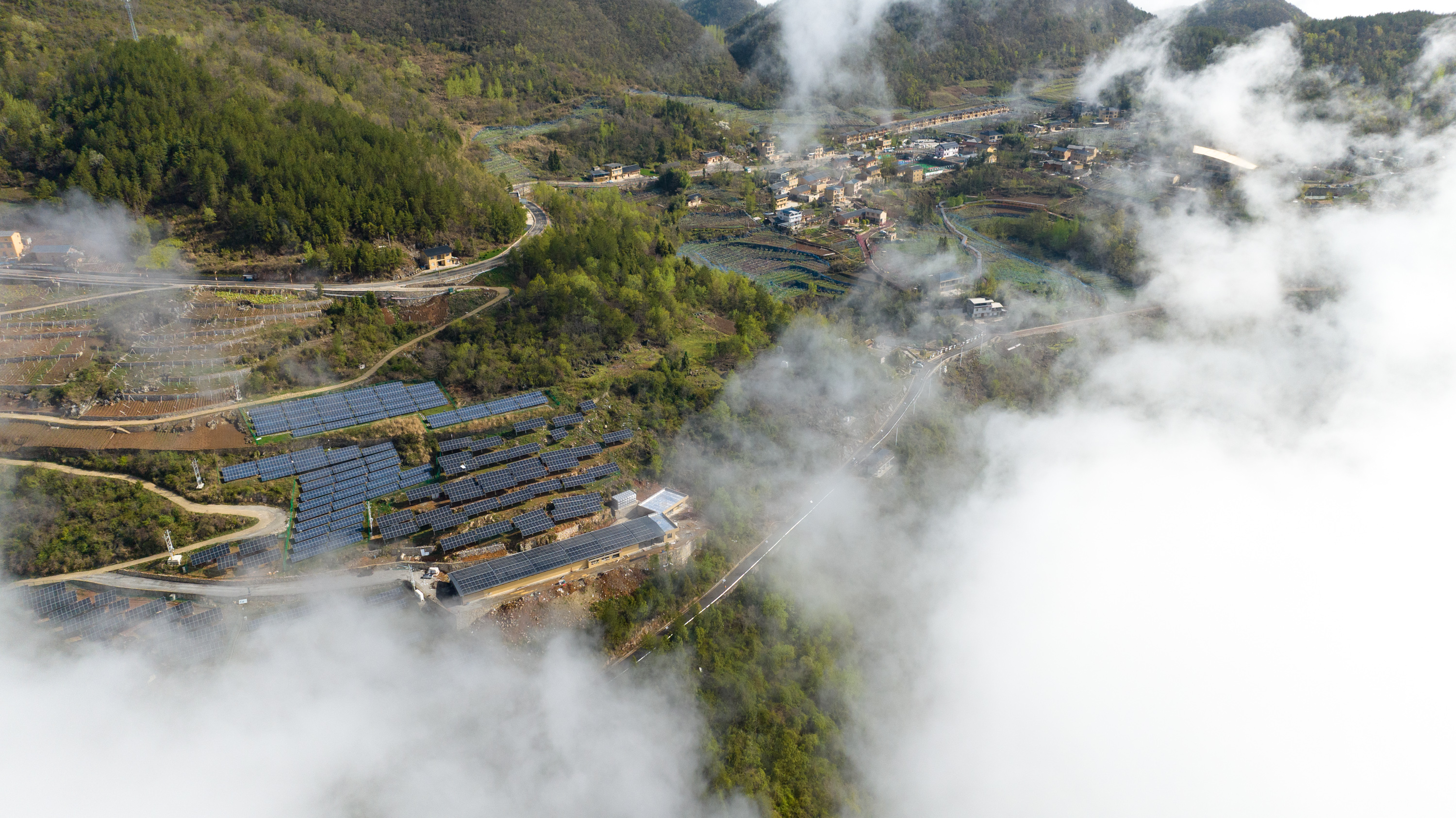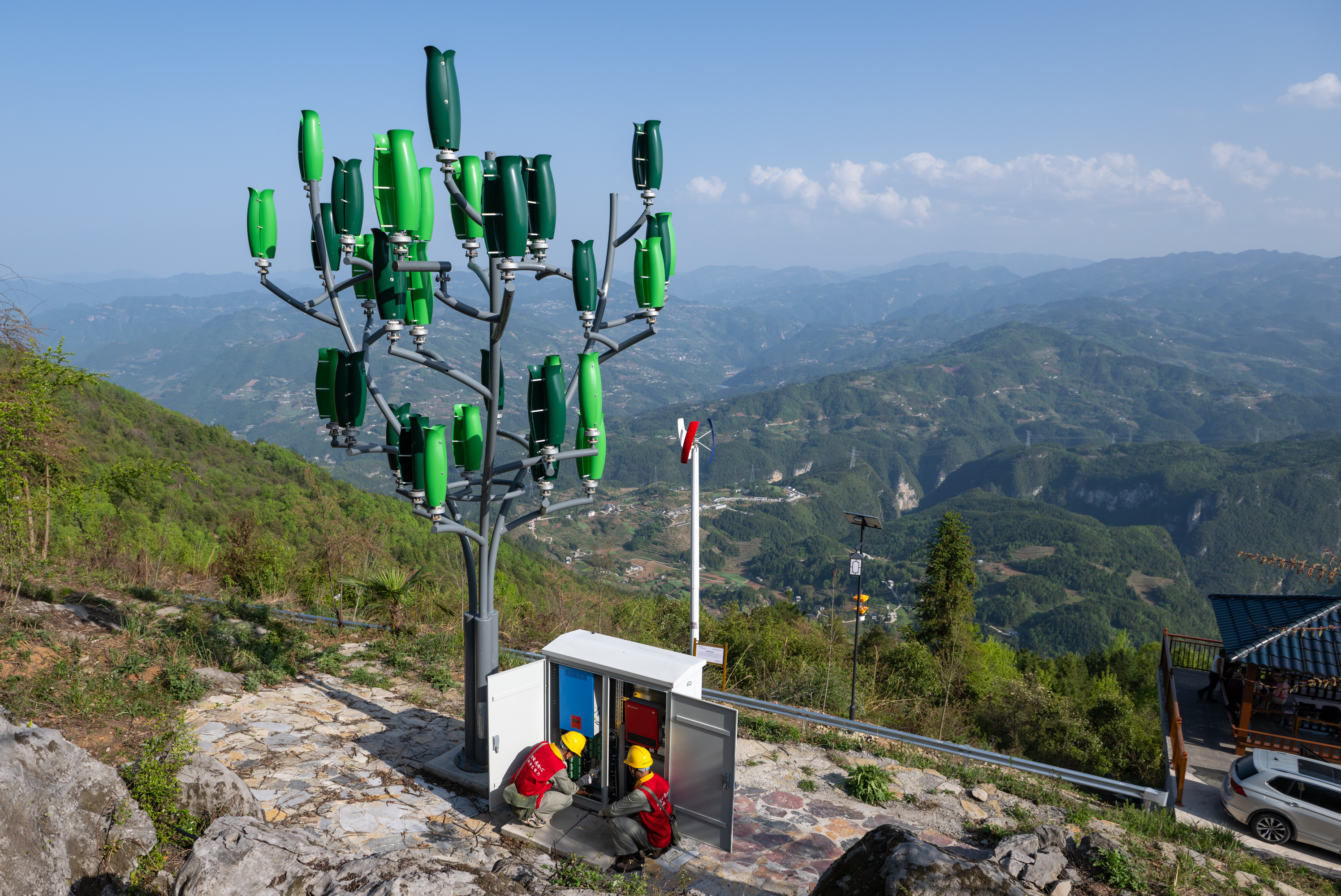Zero-Carbon Village Rises in Tujia Countryside
WUHAN, CHINA - Media OutReach Newswire - 22 April 2025 - During April's Pear Blossom Festival, Tudianzi village, nestled deep in the mountains of central China's Hubei Province, has welcomed over 50,000 visitors in just two days.
In Tudianzi Village, tourists marveled at innovations like solar-storage integrated streetlights illuminating country paths, high-power EV charging stations eliminating range anxiety, and traditional Tujia cuisine cooked in all-electric kitchens -- a vivid showcase of sustainable rural revitalization.

From Tudianzi Village, perched 1,200 meters above sea level, the mist-shrouded Wu Gorge stretches into the distance, while terraced pear blossoms blanket the slopes. A light breeze carries the delicate floral fragrance, marking the most picturesque season for this Tujia ethnic mountain village.
"The table actually charges my phone wirelessly!" exclaimed tourist Ms. Tan, surprised when her phone began charging on a solar-powered bench in the food corridor.
Located in Badong County, Enshi Tujia and Miao Autonomous Prefecture, Tudianzi Village earned its name during the Ming Dynasty as a rest stop for merchants on the ancient Tea Horse Road. Long secluded in the mountains, the village has now gained fame as a model for rural energy revolution, achieving 24/7 zero-carbon operations and 100% green electricity supply.
Solar panels are ubiquitous here -- on rooftops, pavilions, plaza corridors, chicken coops, and pigsties. "The village's solar capacity reaches 1,800 kW. At full capacity for one hour, it can generate 1,800 kWh, enough to power the entire village for a day," said Chen Wentao, person in charge of the State Grid Enshi's development department.
Reliable electricity was once a distant dream for villagers. Aging power infrastructure -- characterized by extensive grid coverage, outdated single-radial network designs, and seasonal load fluctuations -- left communities vulnerable to frequent and prolonged outages, particularly during extreme weather.

"Whenever thunderstorms struck, power lines would fail, plunging the entire village into darkness," recalled 75-year-old Hu De'an. Like many residents, Hu once relied entirely on firewood for light and heat. "Our homes were filled with smoke, but seeing firewood piled under the eaves was the only way we felt secure," he said.
In September 2020, China unveiled its ambitious "dual carbon" goals to the world: achieving peak carbon emissions by 2030 and carbon neutrality by 2060.
Studies showed that traditional biomass fuels like firewood, burned through direct combustion, operate at a mere 10-15% efficiency while generating heavy carbon emissions. This inefficiency has thrust rural China into a critical dilemma -- how to build resilient, clean energy networks that meet growing demand without compromising sustainability.
A breakthrough came in March 2023 when China's National Energy Administration and three other ministries launched a landmark initiative. The plan prioritizes pilot projects to accelerate rural energy transitions, coupling clean power adoption with broad rural revitalization objectives. By August 2023, State Grid Hubei Electric Power had spearheaded a flagship demonstration project in Tudianzi Village, targeting three pillars: stable clean energy supply, efficient resource utilization, and green industrial development.
During a recent visit to Tudianzi's black pig breeding base -- an operation producing over 4,000 hogs annually -- reporters observed a model of integration. Solar panels crowned the spotless pigsty roofs, while odor-free pathways defied backward farm.
The transformation stems from a 30-kilowatt biogas plant constructed adjacent to the facility. Engineered by local power authorities, the system collects manure from the breeding base and kitchen waste from nearby households, channeling them into a closed-loop cycle of "biomass resources - biogas - electricity - fertilizer".
"Biogas is converted into electricity, while its byproducts -- digestate and residues -- are processed into fertilizers for farmland, achieving circular biomass utilization and clean energy supply," said Su Lei, senior engineer of State Grid Hubei Electric Power Research Institute. Notably, the installation of an 80-cubic-meter gas storage tank ensures nighttime green power supply and enables off-grid operations when integrated with flexible energy storage systems.
For local farmer Feng Cailong, the project has brought tangible economic gains. "Previously, disposing pig waste cost over 40,000 yuan annually. Now, delivering it directly to the biogas plant not only cuts disposal expenses but also saves more than 60,000 yuan yearly in electricity, disinfection, and fertilizer costs for forage cultivation," he informed.
These developments epitomize Tudianzi's rural energy transformation. After nearly two years of construction, the village has established a low-carbon energy system dominated by wind and solar power, featuring agile microgrid-distribution network interactions and coordinated "source-grid-load-storage" operations. A multidimensional industrial ecosystem integrating renewable energy, livestock farming, and eco-tourism is taking shape.
In 2024, the village's electricity consumption surged to 537,000 kWh, a 188% increase from 2022. Since launching its energy revolution, Tudianzi's annual renewable energy output reaches 1.44 million kWh, equivalent to saving 472 tons of standard coal while reducing CO₂ emissions by 1,436 tons and SO₂ by 43 tons annually.
"With the village's total installed renewable energy capacity now reaching 1,871 kilowatts, we not only achieve full green power supply for the entire village but also export substantial surplus electricity to external grids," explained Yang Lin, official of the Development and Reform Commission of Enshi Tujia and Miao Autonomous Prefecture.
Hashtag: #EVcharging
The issuer is solely responsible for the content of this announcement.

















